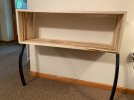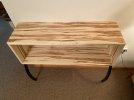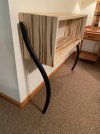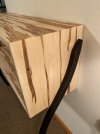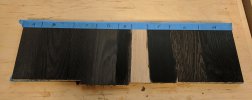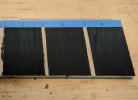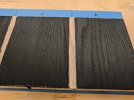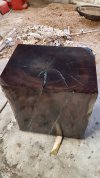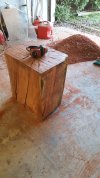Just finished designing a free-standing bar-height kitchen island. Open frame with a shelf.
Am contemplating ebonizing the frame and using either cherry or rainforest granite for the top.
I can make the frame out of any of the high tannin woods.
I've read the FWW and other articles on ebonizing - does anyone have actual experience in doing it and have any tricks or gotchas to offer up?
Am contemplating ebonizing the frame and using either cherry or rainforest granite for the top.
I can make the frame out of any of the high tannin woods.
I've read the FWW and other articles on ebonizing - does anyone have actual experience in doing it and have any tricks or gotchas to offer up?

